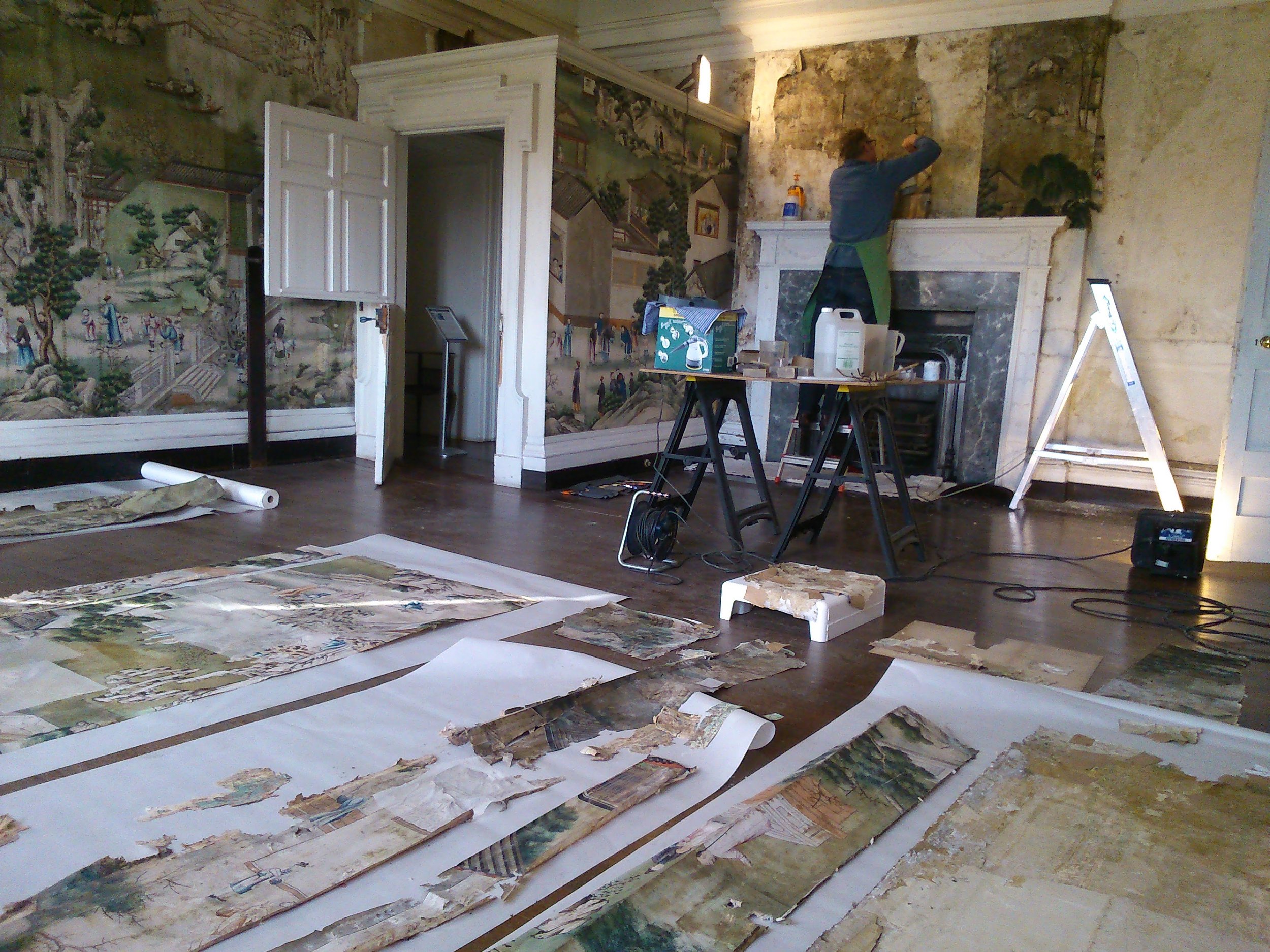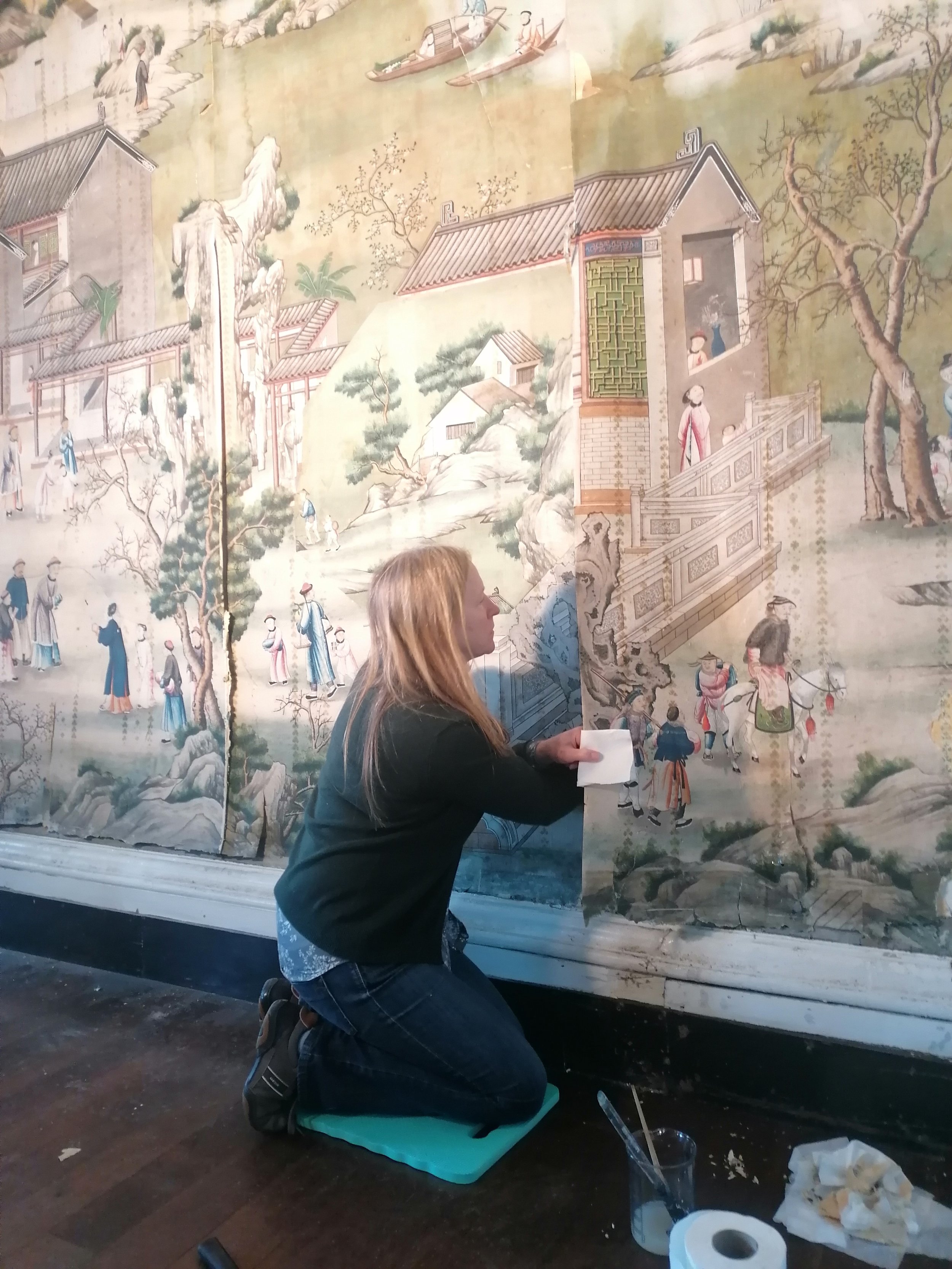Wallpaper surveys and conservation work
I offer a range of services supporting the conservation of wallpapers in historic buildings. These include surveys and reports to identify and date wallpapers; condition reports and treatment proposals; interventions, which may be small-scale or major.


A little bit about wallpaper conservation
Why does wallpaper deteriorate?
Wallpaper deteriorates for many different reasons. These can include the type and quality of the original materials, how the wallpaper was hung, problems with the building itself or through physical damage by people and poor methods of repair. Most wallpapers produced after around 1840, and particularly cheaper papers, are likely to have been made from poor quality, unpurified wood pulp, and may discolour and become brittle after just a few years. Dampness in walls and the environment of a building often causes staining, and can also lead to the failure of adhesives and weakening of the paper through mould growth. Damage can also be caused by over-exposure to light, which results in the fading of colours. The use of inappropriate adhesives for repair can cause irreversible discolouration and staining, and they will often fail after only a short period of time.
When is a professional conservator needed?
DIY repairs may often be successfully carried out with or without the help of professional decorators, using traditional starch pastes. However, it is surprisingly easy to tear or stain old, weak wallpapers. It is also worth being aware that some wallpapers from the 18th and 19th centuries may have been printed with pigments such as arsenic that can be harmful to health, so proper care should be taken. If a wallpaper is historically significant, it is advisable to contact an accredited paper conservator, who should be able to offer general advice plus provide options for repair treatments and make suggestions for long-term care.
* from the website of the Wallpaper History Society






